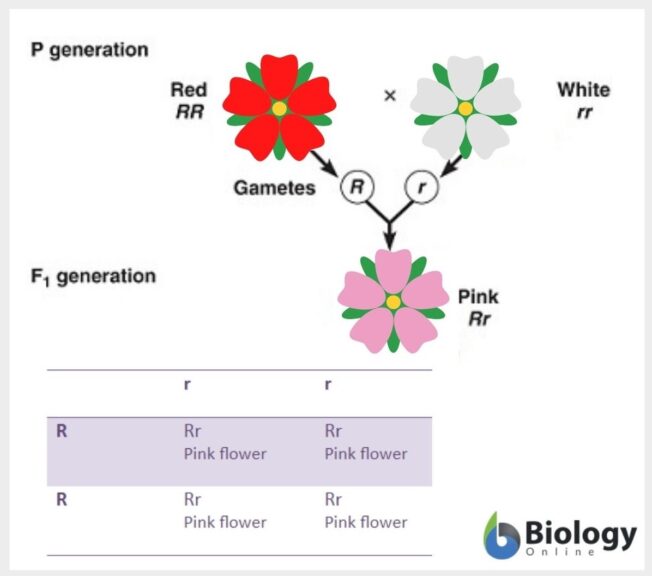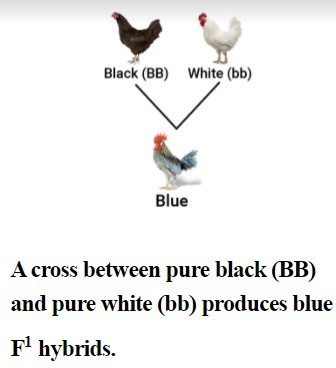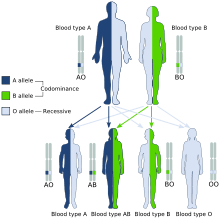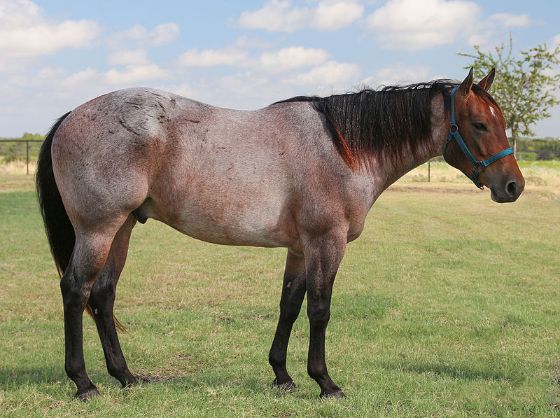Biology Forum › Genetics › Incomplete dominance vs codominance
- AuthorPosts
- August 11, 2021 at 11:29 pm #118466
 Shoaib Zaheer – BioExpertParticipant
Shoaib Zaheer – BioExpertParticipantDominance:
In genetics, dominance is a process in which one allele of a gene on a chromosome either prevails or hides the effect of another variant of the same gene on another chromosome. The first variant is known as dominant and the second is known as recessive. This happens due to mutation in any of the genes.
I hope you have understood what simple dominance is. If not, comment below.
Classical genetics and Mendelian inheritance give the idea about dominance. Letters or Punnett squares (described below) are used to elaborate the principles of dominance. In cross-test Punnett square gives all the expected allelic combinations. It is a grid diagram and alleles are shown by letters.
The shape of peas can either be wrinkled (allele r) or round (allele R). In such a case, there are three possible allele combinations.
- RR- homozygous (round peas)
- rr- homozygous (wrinkled peas)
- Rr- heterozygous (R mask the r allele so the peas are round)
What Is Incomplete Dominance? What Is Codominance?
Following are the definitions of incomplete dominance and dominance
Incomplete dominance definition:
So how can we define incomplete dominance?
By definition in biology, incomplete dominance states that two true-breeding parents are crossed and “intermediate” offspring are produced. It is also known as intermediate inheritance or partial dominance. In this, the alleles did not show dominant or recessive behavior but the dominant allele represents itself in a reduced ratio which means it is incompletely dominant.
Codominance Biology Definition
Let’s define codominance: In codominant inheritance, the alleles in a pair of genes express themselves completely. It is an association between two forms of genes. From each parent, the individual gets one form of codominant allele or gene. If the genes are dissimilar, the dominant allele usually expresses itself. The other allele termed recessive, gets hidden or masked but according to the law of codominance both the alleles represent themselves, neither will get recessive. Want to learn more about codominance, click here.
Complete dominance:
In this type one allele of heterozygous genotype completely dominates the effect of the other. The allele that masks the other is called dominant and the allele that gets mask is called recessive. So, the phenotype of heterozygote cannot be distinguished from dominant homozygote.
(These three types of dominance should not be confused with cross-dominance. Cross Dominance (also called mixed-handedness) is a condition that happens when a person uses both of his hands for doing different tasks. For example, a person may write with the right hand and perform other tasks with the left hand.)
What is Codominance in Genetics?
Codominant genetics is an association between two forms of genes. The individual receives each gene from their parents. The gene having a dominant phenotype does not express fully. So both dominant and recessive genes express themselves.
Non-Mendelian Inheritance:
In this, the offspring phenotype and the parent’s phenotype are dissimilar. Incomplete dominance and codominance are examples of non-mendelian inheritance.
After reading the above definitions can anyone tell what is the difference between incomplete dominance and Codominance? Let’s summarize it below for clearer concepts.
Difference between Codominance and Incomplete dominance
Mendel’s laws of inheritance explain the effect of alleles and dominance factors of inheritance. However, codominance and incomplete dominance are not explained by Mendel’s law but his study will help in defining them. There is a brief comparison of codominance vs. incomplete dominance.
Incomplete dominance Codominance Incomplete dominance happens in heterozygous, there is neither recessive nor dominant allele but the offspring have the intermediate trait. In codominance alleles do not show dominant or recessive behavior, the offspring from the homozygous parents have a mixture of both alleles. There is a visible expression of alleles as no one dominates over others. The expression of alleles is evenly visible as both the alleles express themselves equally. The trait of offspring is different from parents due to the mixing of phenotype and genotype. As there is no mixing of phenotype and genotype so the trait of offspring is not different. Offspring does not express the phenotype of parents. Offspring expresses parents’ phenotypes. The dominant allele does not mask the recessive allele. The phenotype of offspring shows the combination of both alleles. For analysis, a quantitative approach is used. It gives the analysis of both non-dominating alleles. For analysis, a quantitative approach is used. It only gives an analysis of gene expression. Examples: - Physical characters like height, the color of humans
- Pink flowers of four o’clock
Examples: - The ABO blood group system of humans
- Spots on the feathers of animals
Codominance and Incomplete Dominance Examples
Incomplete Dominance:
Incomplete dominance is a very common phenomenon in the field of genetics. It causes physiological and morphological variety.
Snapdragon shows the phenomena of incomplete dominance by producing pink flowers. The cross-pollination among red and white snapdragons leads to the formation of pink flowers which means no alleles show dominance.

Figure 1 shows the Punnett Square Diagram of a test cross between a red-flower-bearing plant and a white-flower bearing plant, producing a pink-flower-bearing offspring.
The above figure shows the incomplete dominance via a Punnett square. The R shows the red allele and the r shows the white allele. The plant incompletely expresses the R and leads to the formation of pink flowers Rr. The R and r do not get mixed but the effect of R just expresses less dominantly.
In humans:
Incomplete dominance in humans is also observed. Crossing between the alleles of parents produces the offspring having the intermediate or different trait of twos. It can be said that incomplete dominance is as old as human life.
Height, skin color, eye color, size of hands, the pitch of sound are the different physical characteristics in humans that show incomplete dominance.
If one of the parents has straight and the other has curly hair, the children may have wavy or semi-curly hair. It is also considered as an example of heterozygous.
Human height is also an example of incomplete dominance. Parents of different heights may have children having heights intermediate to theirs.
In other animals:
An Andalusian chicken which is found in Spain is an example of incomplete dominance. In this, the male has white-feathered, and the female has black. The offspring produce tinged or blue feathers.

Figure 2 showing incomplete dominance. Source.
Codominance:
The ABO blood group system is an example of the codominance trait. The chemical alterations of glycoprotein on blood cells surface are controlled by three alleles. Among these, at the ABO locus two (I<sup>A</sup>, I<sup>B</sup>) are co-dominant alleles and also dominant over recessive i. So the individual having I<sup>A</sup>I<sup>A</sup> or I<sup>A</sup>i will have blood group A and the individual having I<sup>B</sup>I<sup>B</sup> or I<sup>B</sup>i have blood group B. The individual who has I<sup>A</sup>I<sup>B</sup> will have an AB blood group. So the I<sup>A</sup> and I<sup>B</sup> are examples of co-dominant alleles.
The codominance ratio is 1:2:1 but it is not always considered true in every case.

Figure 3 shows A and B blood types in humans show codominance, but the O type is recessive to A and B.
Red Roan Horse:
In horses, the roan coat color is also an example of codominance. Crossbreeding among chestnut and white parents will produce a “red roan”.

Figure 4 shows the Red Roan Horse. Image credit: Betty Wills, CC BY-SA 4.0.
Multiple Alleles:
Three or more modified forms of alleles that are at the same locus are termed multiple alleles, but two alleles are present in an organism. For example, the ABO blood group system is managed by three alleles but in an individual two of them are present.
Summary:
Incomplete dominance and codominance, both are a variety of dominant/recessive traits. They are the two types of genetic inheritance. Understanding them will help in understanding the facts of inheritance more easily. When the phenotype of parents blends and create an offspring with a different phenotype, it is termed incomplete dominance
In codominance, the offspring have the phenotype of its parents.
That’s all about codominance and incomplete dominance. I hope you have understood what does incomplete dominance means and what is codominance. Still, have any questions? Comment below. I will respond.
- AuthorPosts
You must be logged in to reply to this topic.



